Hindus and Jews
The earliest trade contact between Hebrews and Hindus could have dated back to the era of David and Solomon. “The king had trading ships at sea along with ships of Hiram. Every three years it returned, carrying gold, silver and ivory, and apes and baboons” Bible( Kings 10.22). According to the Old Testament, Ophir was the name of the place famous for its wealth. Solomon traded gold, silver, sandalwood, pearls, ivory, apes, and peacocks. Modern scholars have identified Ophir with the Abhira kingdom of western India.
But the first large-scale migration of Jewish refugees to India was after the Roman destruction of Jerusalem. Indian Jewish tradition says the first wave of Jewish refugees landed on the Kerala coast at Kodungallur in 70 CE. Painting from Paradesi Synagogue(Mattanchery) depicts the scene.
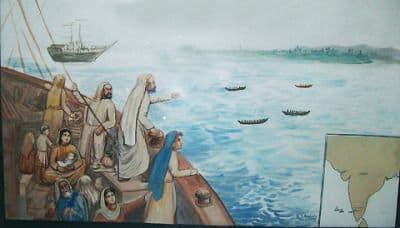
The Hindu Maharaja of Kodungallur cordially received the Jewish refugees. He granted them land, freedom of life & freedom to practice religion. Painting from Paradesi Synagogue depicts the king welcoming Jewish refugees. The king is with full entourage-bearing colored parasols.
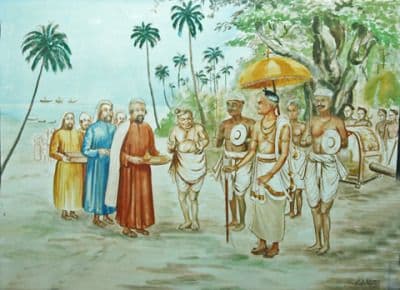
This cordial sanctuary offered by the Hindu Maharajas encouraged other Jews to migrate to Kerala for centuries when they faced persecution in the west. Jewish tradition says their leader Joseph Rabban received many privileges from Hindu Maharaja including tax-free land & guild.
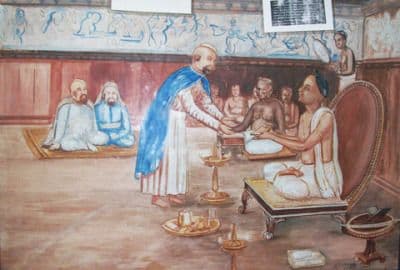
There is also an inscription that substantiates this tradition. Cochin plates of Bhaskara Ravi Varman record a grant to Jewish merchant Joseph Rabban. He was exempted from tax payment & granted hereditary succession. The inscription’s dated by historians from the 8th to 11th century. What was special about the inscription? It granted Jews rights that were the preserve of the royal family alone, including firing three salutes at daybreak and on the day of marriage. It virtually gave Rabban the status of a king, and Kerala Jewish songs call him “King of Jews”.
Thus, the Jews were not only accepted by Hindus with open arms but they were also granted special privileges and they happily thrived. Soon, they began dominating trade on the western coast. This is the only instance in Jewish history where the Jews were not religiously persecuted.
Hindu India became such a welcoming home for Jews that thousands of Sephardic Jews of Spain fled to Kerala in the 15th/16th century during the inquisition. Today their descendants are known as “Paradesi Jews” (whites). They have a song which reads- “Hindus are our true brothers”.

Unfortunately, Antisemitism also followed Jews to India. In 1524, the Jewish settlement of Kodungallur was destroyed by a Muslim army over a pepper feud. The Jewish houses and Synagogues were burnt. The last Jewish prince swam to Kochi. Kochi then became the town of Jews.
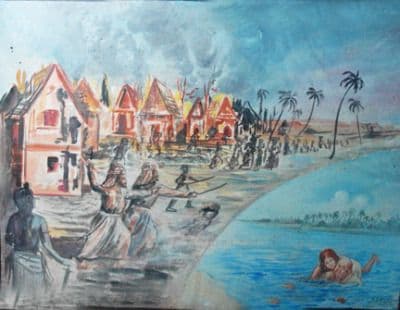
The Hindu Raja of Kochi not only welcomed the Jewish refugees, but he also allowed them to build a Synagogue next to the Royal Palace and Royal temple. The painting depicts the construction of the Synagogue.
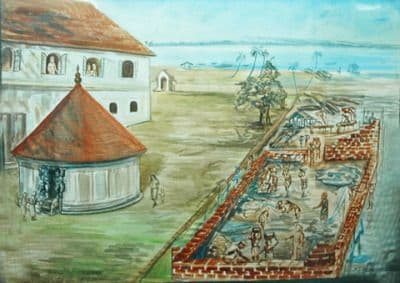
The Indian Jews were also persecuted by the Portuguese during Vatican Inquisition. This led to the migration of Jews to Kochi. The Maharaja allowed them to construct many Synagogues. The Paradesi Synagogue of Kochi was constructed in 1568 under the auspices of the Maharaja. Even today, the Paradesi Synagogue and the Royal fort temple of Kochi stand next to each other. Further, it was a tradition among the Maharajas of Kochi to gift golden crowns to the Paradesi Synagogue. These are still preserved and put on display at the Synagogue.
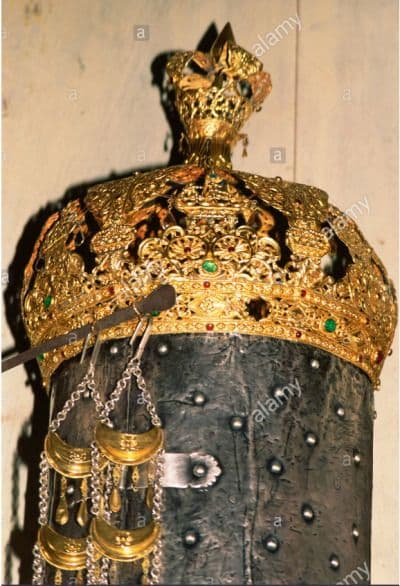
After the Balfour Declaration of 1917 confirmed the British intention to create a Jewish homeland, many Kerala Jews expressed a desire to go to British Palestine. Maharaja Rama Varma XVII of Kochi helped 8000 Jews migrate to the Jewish Holy Land. He personally bore their expenses. This tolerance shown by Maharaja was striking. According to scholar Nathan Hatz, he would not fight battles on Sabbath considering the sentiments of his Jewish subjects. He would also not offer prayer to the family goddesses on Sabbath because of Jewish reservations on “idolatry!”
The Hindus and Jews have a history of long cultural and intellectual exchanges. The Jewish astronomer Sanad Ibn Al Yahudi (9th century CE) translated Surya Siddhanta into Arabic and wrote a treatise on it.
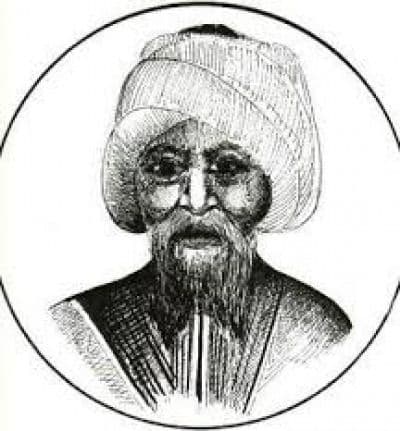
Rabbi Abraham Ibn Ezra (12th Century) was a Jewish scholar of Astronomy and Astrology. He was very much influenced by Indian sciences. In his book Sefer ha-mispar, he gives credit to Hindus for the origin of Numerals. He traveled to India and collected several Sanskrit books. The Rabbi was also among the earliest outsiders to acknowledge that Indians invented zero. Ibn Ezra also denied that science had exclusively European origins. He categorically that Indian science was inferior to no other civilization in terms of antiquity. He freely used the “Rashi” charts in his astrological treatises.
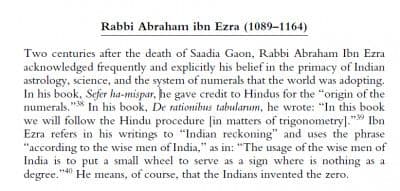
Source: https://twitter.com/BharadwajSpeaks/status/1393948308024938498